SS1 Mathematics Exam Questions & Answers- First Term
First term Maths Entrance Examination
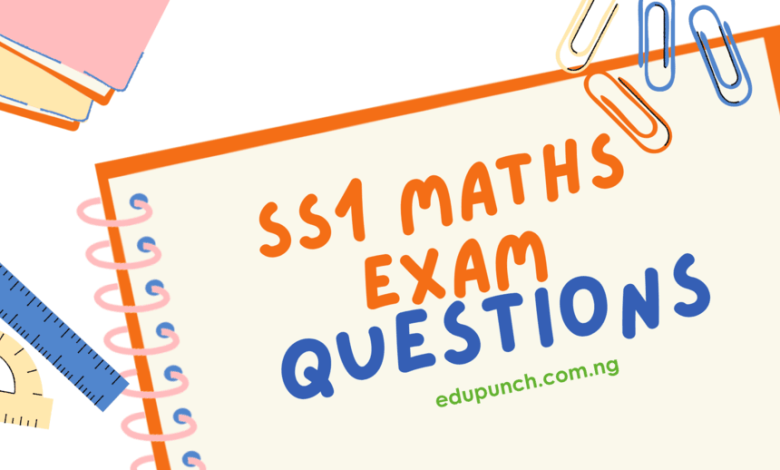
Prepare for the SS1 Mathematics entrance exam with our comprehensive guide, featuring practice questions, detailed solutions, and expert answers.
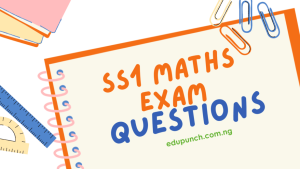
SS1 Mathematics Entrance Examination -First Term
Introduction
Are you a teacher, Preparing to type your exams questions ahead of first term? We have compiled the past questions for the term for you to make it easier. You don’t necessarily need to burn the candle to type from textbook.
Teachers are expected to contact us to get the full questions in probably arranged in doc and PDF formats. Everything has been typed so you you don’t need the stress.
The exams questions is an entrance exams to test candidate who is entering senior secondary school 1.
This comprehensive guide contains 61 carefully selected questions covering all essential mathematics topics required for Senior Secondary School admission.
Perfect for students transitioning from JSS3 to SS1, teachers, and parents seeking quality exam preparation materials.
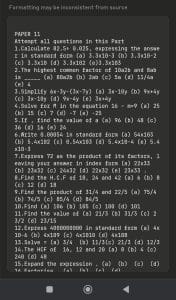
Exam Duration: 1½ hours
Total Questions: 61 (30 in Paper 1 + 31 in Paper 2)
Format: Multiple choice questions
Read Also: SS2 English Language First Term Exams: Past Questions & Answers
Key Topics Covered:
- Number bases and conversions
- Algebra and linear equations
- Geometry and mensuration
- Statistics and data handling
- Standard form and significant figures
- Factorization and HCF/LCM
Paper 1: Fundamental Mathematics (30 Questions)
Number Bases and Conversions
Question 1: Express 342₆ as a number in base ten
- A) 34.2
- B) 44
- C) 57
- D) 134 ✓
- E) 3420
Solution: 342₆ = (3×6²) + (4×6¹) + (2×6⁰) = 108 + 24 + 2 = 134
Question 2: Express in base two, the square of 11₂
- A) 1001
- B) 1010
- C) 1011
- D) 1101 ✓
- E) 1100
Solution: 11₂ = 3₁₀, 3² = 9₁₀ = 1001₂
Word Problems and Consecutive Numbers
Question 3: The sum of three consecutive even numbers is 72. The highest of the three numbers is:
- A) 12
- B) 14
- C) 22
- D) 24
- E) 26 ✓
Solution: Let numbers be x, x+2, x+4. Then x+(x+2)+(x+4)=72, so 3x+6=72, x=22. Highest = 26
Question 4: Find the product of the square of ½ and the sum of 13 and 19
- A) 8 ✓
- B) 16
- C) 32
- D) 64
- E) 128
Solution: (½)² × (13+19) = ¼ × 32 = 8
Geometry and 3D Shapes
Question 5: How many edges does a cube have?
- A) 4
- B) 6
- C) 8
- D) 10
- E) 12 ✓
Question 8: Two right angles measure:
- A) 360°
- B) 180° ✓
- C) 120°
- D) 90°
- E) 40°
Question 11: Which of the following plane shapes has no line of symmetry?
- A) Kite
- B) Rhombus
- C) Trapezium
- D) Square
- E) Parallelogram ✓
Question 26: What is the sum of angles in a trapezium?
- Answer: 360° ✓
Rounding and Significant Figures
Question 6: Round off ₦81,253.87 to the nearest ₦100:
- A) ₦81,300 ✓
- B) ₦81,250
- C) ₦813
- D) ₦81,200
- E) ₦81,000
Question 9: Round off 2.6548 correct to one decimal place:
- A) 2.6
- B) 2.65
- C) 2.66
- D) 2.7 ✓
- E) 3
Question 12: Round off 0.008251 to 2 significant figures:
- A) 0.82
- B) 0.83
- C) 0.008
- D) 0.0083 ✓
- E) 0.0082
Roman Numerals and Number Systems
Question 7: Write 1424 in Roman numerals:
- A) MXMXXIV
- B) MCDXXIV ✓
- C) MCMXIV
- D) MCDCXXIV
- E) MCMXXIV
Question 13: The value of 8 in 18214:
- A) 8 units
- B) 8 thousand ✓
- C) 8 tens
- D) 8 ten thousands
Unit Conversions and Fractions
Question 14: Express 3.85km in metres:
- A) 355m
- B) 3850m ✓
- C) 38500m
- D) 38500m
Question 15: Which is not equivalent to ½?
- A) 9/18
- B) 11/22
- C) 15/30
- D) 8/12 ✓
Question 16: Express 4/25 as a percentage:
- A) 4%
- B) 6¼%
- C) 8%
- D) 16% ✓
Question 17: 45 minutes as a fraction of one hour:
- A) 1/60
- B) 1/4
- C) 3/4 ✓
- D) 4/5
Linear Equations and Problem Solving
Question 10: A salesgirl earns ₦3000 per month. She spends ₦3x on food and ₦2x on rent and saves the rest. How much does she save?
- A) ₦(3000-3x)
- B) ₦(3000-2x)
- C) ₦(3000-5x) ✓
- D) ₦(1500-5x)
Question 18: When the sum of n and 2 is divided by 20, the result is 4. Find n:
- A) 20
- B) 40
- C) 78 ✓
- D) 80
- E) 82
Solution: (n+2)÷20 = 4, so n+2 = 80, therefore n = 78
Statistics and Data Analysis
Question 19: Given the set {8,9,5,6,2,4,8,0}, find the mean:
- A) 4.2
- B) 5.0
- C) 5.12
- D) 5.20
- E) 5.25 ✓
Solution: Sum = 42, Count = 8, Mean = 42÷8 = 5.25
Negative Numbers and Inverses
Question 20: Find the number which, when 8 is subtracted from it, gives -3:
- A) 5 ✓
- B) 4
- C) 2
- D) 8
Question 21: Find the number which, when 9 is subtracted from it, gives -8:
- A) -1
- B) -2
- C) 1 ✓
- D) 3
Question 22: What is the additive inverse of -19?
- A) +19 ✓
- B) -19
- C) -20
- D) +20
Advanced Problem Solving
Question 24: The difference between the product of 78 and 36 and their sum is:
- A) 2894
- B) 2694 ✓
- C) 9428
- D) 2922
Solution: (78×36) – (78+36) = 2808 – 114 = 2694
Question 27: When 27 is divided by the sum of 6 and a certain number, the result is 3. Find the number:
- A) 15
- B) 20
- C) 10.75
- D) 30
Solution: 27÷(6+x) = 3, so 6+x = 9, therefore x = 3
Question 28: Calculate simple interest on ₦800 for 3 years at 25% per annum:
- A) ₦800
- B) ₦400
- C) ₦200
- D) ₦600 ✓
Solution: SI = PRT/100 = 800×25×3/100 = ₦600
Question 29: Find the sum of all prime numbers between 1 and 10:
- A) 2
- B) 4
- C) 15
- D) 17 ✓
Solution: Prime numbers: 2, 3, 5, 7. Sum = 17
Question 30: Find the reciprocal of 0.002:
- A) 0.001
- B) 0.002
- C) 200
- D) 500 ✓
Paper 2: Advanced Mathematics (31 Questions)
Standard Form and Scientific Notation
Question 1: Calculate 82.5 ÷ 0.025, expressing in standard form:
- A) 3.3×10⁻³
- B) 3.3×10⁻²
- C) 3.3×10¹
- D) 3.3×10²
- E) 3.3×10³ ✓
Solution: 82.5 ÷ 0.025 = 3300 = 3.3×10³
Question 6: Write 0.00054 in standard form:
- A) 54×10³
- B) 5.4×10²
- C) 0.54×10³
- D) 5.4×10⁻⁴ ✓
- E) 5.4×10⁻³
Question 12: Express 4000000000 in standard form:
- A) 4×10⁻⁶
- B) 4×10⁹ ✓
- C) 4×10¹⁰
- D) 4×10⁸
HCF, LCM and Factorization
Question 2: The highest common factor of 10a²b and 8ab is:
- A) 80a²b
- B) 2ab ✓
- C) 5a
- D) 1¼a
- E) 4
Question 7: Express 72 as product of prime factors in index form:
- A) 2²×3³
- B) 2³×3² ✓
- C) 2⁴×3²
- D) 2²×3²
- E) 2³×3³
Question 8: Find the HCF of 18, 24 and 42:
- A) 6 ✓
- B) 8
- C) 12
- D) 18
Question 14: The HCF of 16, 12 and 20:
- A) 8
- B) 4 ✓
- C) 240
- D) 48
Algebraic Operations
Question 3: Simplify 6x – 3y – (3x – 7y):
- A) 3x – 10y
- B) 9x + 4y
- C) 3x – 10y
- D) 9x – 4y
- E) 3x + 4y ✓
Solution: 6x – 3y – 3x + 7y = 3x + 4y
Question 4: Solve for m in 16 – m = 9:
- A) 25
- B) 15
- C) 7 ✓
- D) -7
- E) -25
Mixed Numbers and Fractions
Question 9: Find the product of 3¼ and 2⅖:
- A) 7¾ ✓
- B) 7⅘
- C) 8¼
- D) 8⅘
Solution: 13/4 × 12/5 = 156/20 = 7¾
Algebraic Expressions and Equations
Question 18: If f(x) = 2x² – 3x + 1, find f(-1):
- A) -6
- B) 7
- C) 5
- D) 6 ✓
Solution: f(-1) = 2(-1)² – 3(-1) + 1 = 2 + 3 + 1 = 6
Question 25: Find the value of -5(-7) – 6:
- A) -17
- B) 7
- C) -7
- D) 29 ✓
Solution: -5(-7) – 6 = 35 – 6 = 29
Study Guide for SS1 Mathematics Entrance
Essential Topics to Master:
- Number Bases: Practice converting between different bases (2, 6, 8, 10)
- Standard Form: Master scientific notation for large and small numbers
- Algebra Basics: Linear equations, substitution, and simplification
- Geometry: Properties of shapes, angles, and 3D figures
- Statistics: Mean, median, mode, and data interpretation
- Prime Factorization: HCF, LCM, and factor trees
Exam Preparation Strategies:
Time Management:
- Spend 45 minutes on Paper 1 (30 questions)
- Spend 45 minutes on Paper 2 (31 questions)
- Quick review in remaining time
Question Approach:
- Read each question carefully
- Eliminate obviously wrong answers
- Show working for verification
- Don’t spend too long on difficult questions
Common Mistake Prevention:
- Double-check number base conversions
- Verify algebraic manipulations
- Be careful with negative number operations
- Check units in measurement problems
Key Formulas to Remember:
- Simple Interest: SI = PRT/100
- Mean: Sum of values ÷ Number of values
- Base Conversion: Multiply by powers of base
- Standard Form: a × 10ⁿ (where 1 ≤ a < 10)
- HCF by Prime Factors: Product of common factors
- Consecutive Numbers: If first = n, then n, n+2, n+4…
Practice Tips for Success
Daily Study Routine:
- 30 minutes: Review one topic area
- 20 minutes: Practice 10-15 questions
- 10 minutes: Review mistakes and solutions
Week Before Exam:
- Complete full practice papers under timed conditions
- Focus on weak areas identified
- Review all formulas and key concepts
- Get adequate sleep and maintain good health
Additional Resources:
- Past SS1 entrance papers
- Mathematics textbooks (JSS3 level)
- Online practice platforms
- Study groups with peers
Frequently Asked Questions
What’s the pass mark for SS1 entrance?
This varies by school, but typically 60-70% is required for admission to science classes.
Can I use a calculator?
No, except your school approves. Check what your school requires to sit for the exams.
How are the questions weighted?
All questions typically carry equal marks.
What if I don’t finish all questions?
Answer as many as possible – there’s usually no negative marking.
Conclusion
Success in SS1 Mathematics entrance examinations requires consistent practice, understanding of fundamental concepts, and good exam technique.
This comprehensive guide covers all major topics you will encounter in internal and external exams including NECO entrance examination.
Note: As student, regular practice with these question types will build your confidence and improve your performance significantly.

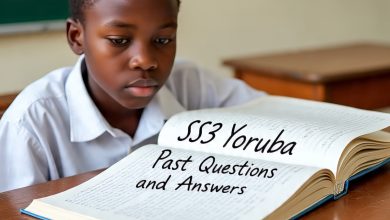

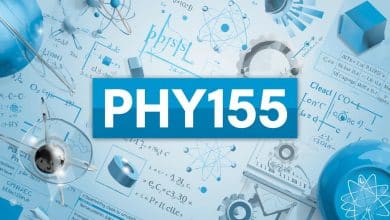

3 Comments